- What's On
- Collections
- Research
- Stories
- Visit us
- About Us
- Get involved
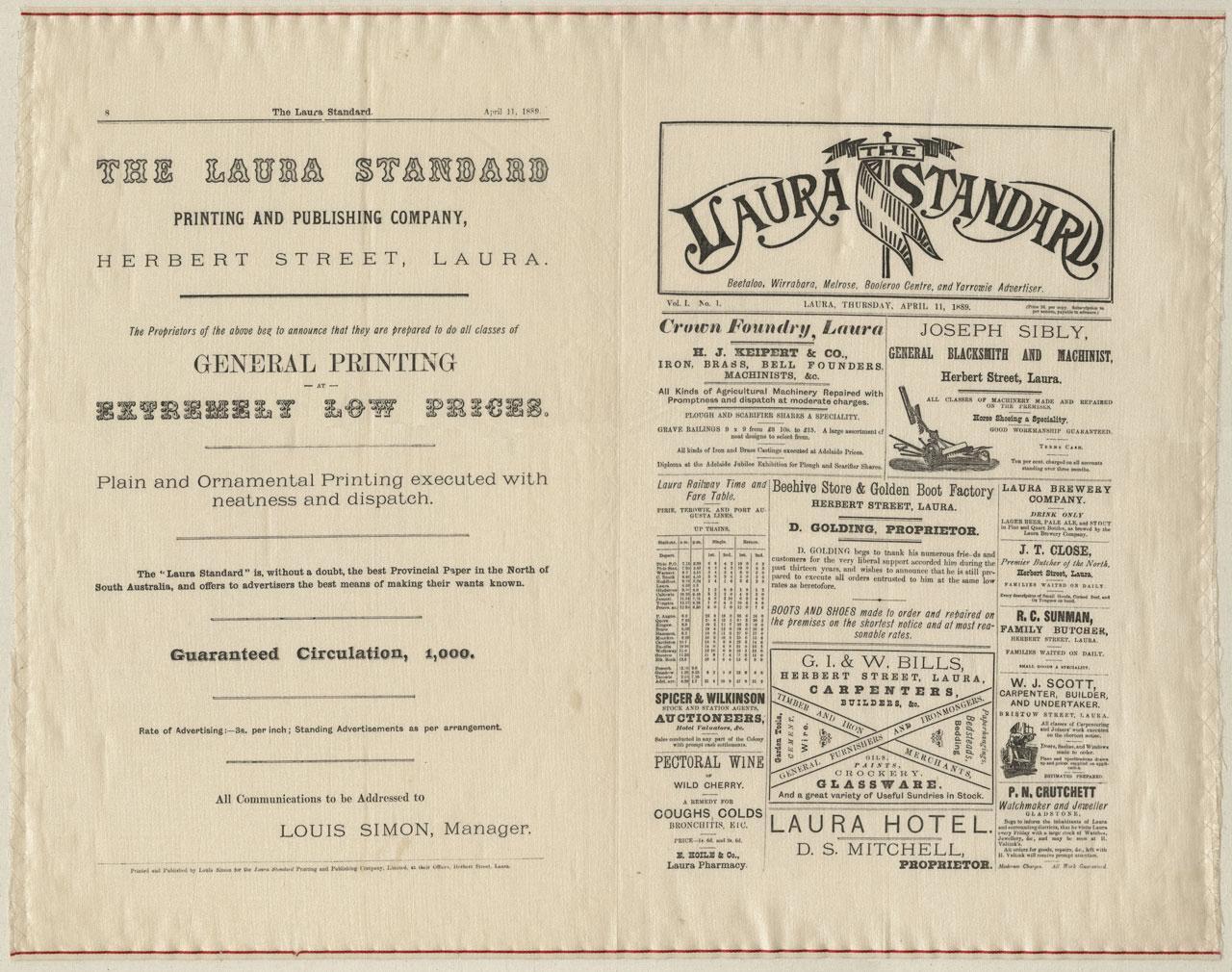
Silk, one of the world's most luxurious fabrics, was first woven in ancient China before 3500 BC. By the eighth century AD, Chinese artisans were already experimenting with printing on silk, setting the stage for centuries of innovation. Fast forward to the 19th century, when silk printing became a showcase of artistic skill in England and Australia. Today, the State Library of South Australia proudly houses a fascinating collection of silk-printed treasures. These include theatre programs, posters, mementos, racing guides, and newspapers. Testaments to the timeless beauty and craftsmanship of silk printing and a printer’s skill.
Silk newspaper
The Laura Standard, founded in 1889 by Israel Taylor, Henry Weston (editor), and Louis Simon, made its debut with a special touch. The very first issue was printed on silk as a commemorative tribute to the town’s inaugural newspaper.
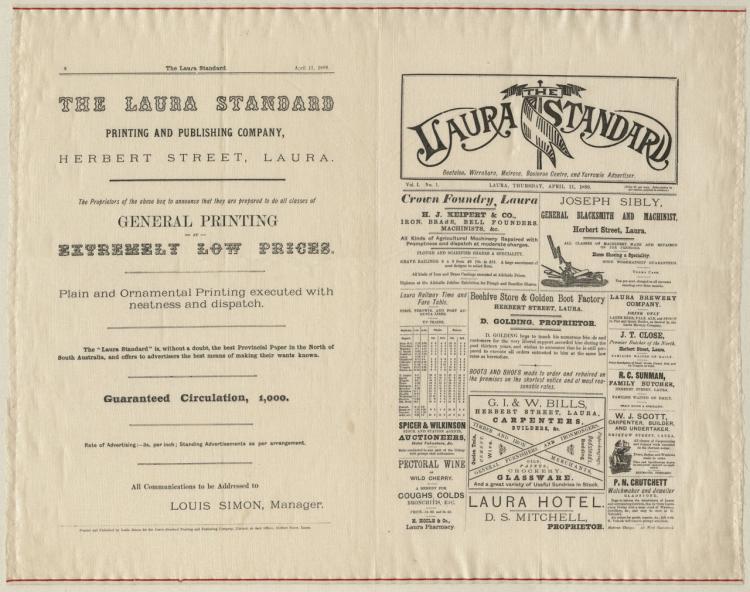
A silk memento
This memento, created on 20 December 1919, was created as a special tribute to the pioneering aviators who triumphed in the Great Air Race – Sir Ross Smith, Sir Keith Smith, Sergeants JM Bennett, and WH Shiers. It was crafted to welcome them to Queensland and Cloncurry, celebrating their remarkable achievement in aviation and honouring their successful flight.
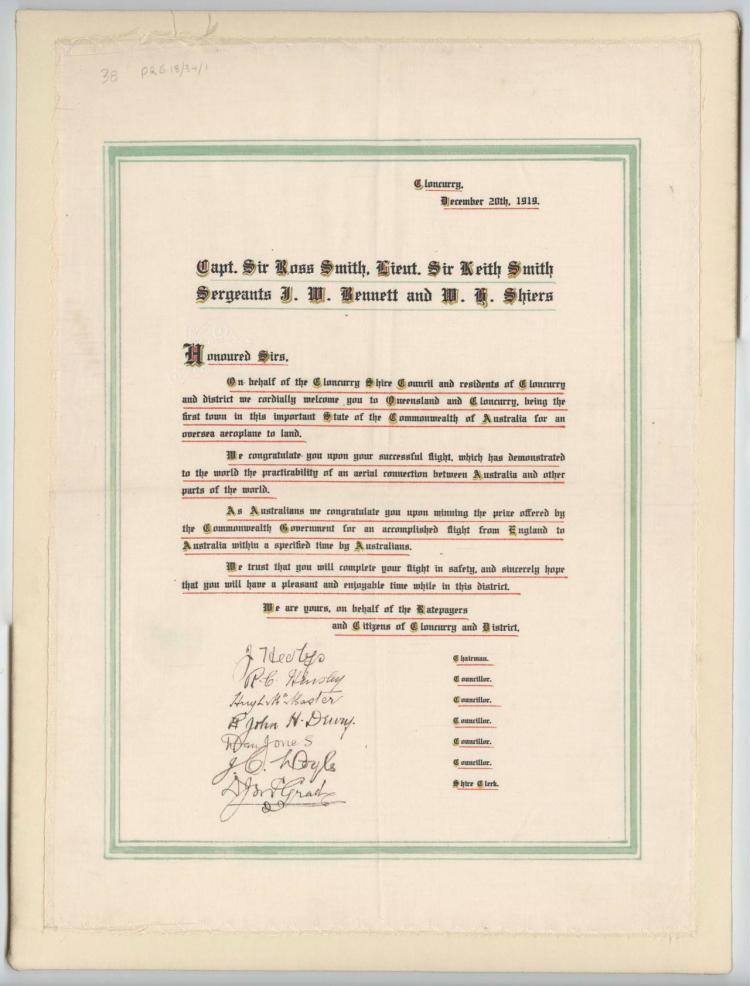
A silk order of procession
On Wednesday, 21 January 1863, Adelaide celebrated with a public holiday as crowds gathered to honour the incredible achievement of John McDouall Stuart during the 'Great Stuart Demonstration’.
The event marked a momentous occasion. Stuart had led the first successful European crossing of Australia from south to north through the centre of the continent. The expedition returned to the south without loss of life.
Earlier, Robert O'Hara Burke and William Wills had crossed the continent to the Gulf of Carpentaria, but they perished on the return journey.

From December 1861 to December 1862, Stuart led his sixth expedition across the gruelling arid interior, finally reaching the Indian Ocean at Chambers Bay on 24 July 1862. He and his companions returned to Adelaide on 17 December 1862.
The Overland Telegraph Line was later constructed along the route to the north forged by Stuart.
The South Australian Government awarded Stuart 2,000 pounds for his pioneering journey, although he was only permitted to access the interest from the funds. This silk Order of Procession was created to commemorate that historic tribute to Stuart’s remarkable feat.
Silk theatre programs
Snowdrop, 1886
"Performed as a Christmas play for the entertainment of the inmates of the North Terrace Lunatic Asylum, Adelaide, S.A., on the evening of January 7th, 1886, by The Young Australian Troupe."
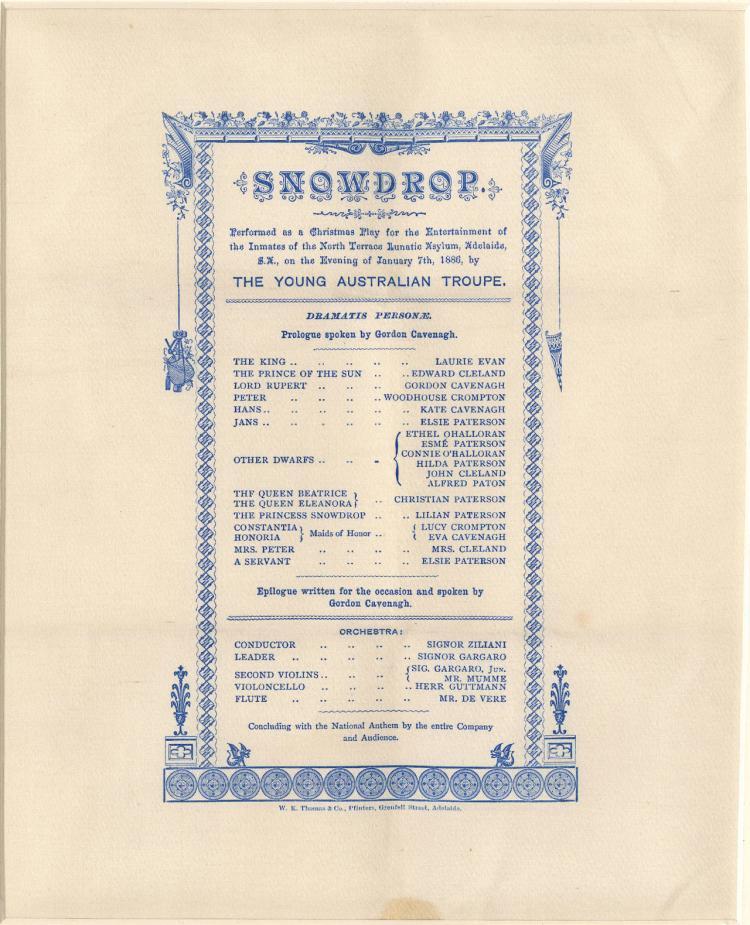
The program was printed on silk by W. K. Thomas & Co. Printers, Grenfell Street Adelaide. The cast list features the names Cleland and O'Halloran in the cast. These were members of two prominent Adelaide families.
Othello, 1841
Shakespeare's Othello commemorates the first performance at the Queen's Theatre, Gilles Arcade, Currie Street, the oldest Australian mainland theatre still in existence. Emmanuel Solomon named the theatre in honour of the young Queen Victoria in 1841.
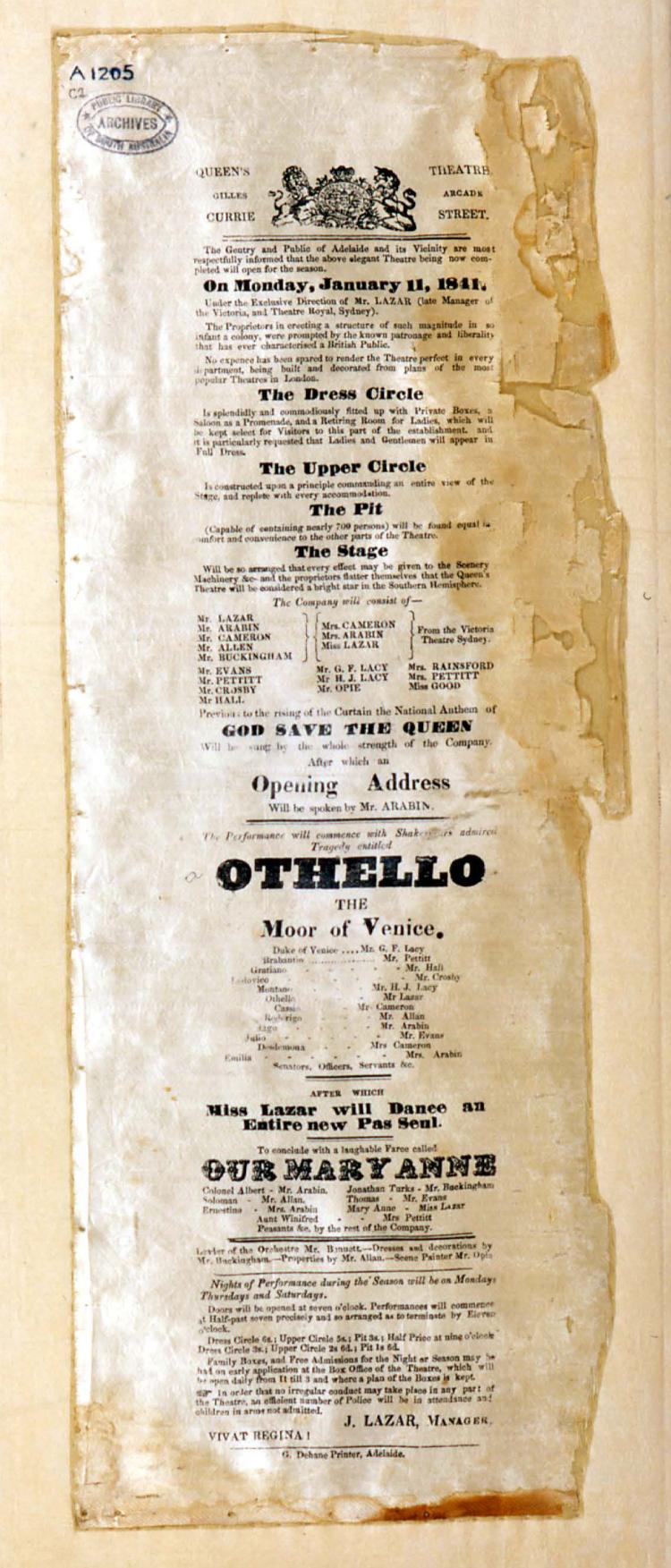
The theatre was leased to John Lazar, who with his talented daughter Rachel, turned on a lengthy show on opening night. Shakespeare's tragedy Othello was followed by the 'laughable farce' Our Mary Anne, interspersed with dances by Rachel Lazar. The performance finished at one o’clock the following morning.
The old theatre in Gilles Arcade continues to operate today as a venue for the Fringe Festival, Feast Festival and numerous one-off events.
A silk theatre poster
In 1856, the Register newspaper printed a stunning silk poster for a ‘Grand Vocal and Instrumental Concert’ to be held on Monday evening, 30 June, at White’s Concert and Assembly Rooms in King William Street, Adelaide. This elegant event was held under the patronage of the Deputy Provincial Grand Master and various Freemason Lodges, with His Excellency Bro. Sir R. G. MacDonnell and Miss MacDonnell in attendance. The Choral Society lent its assistance to the performance, which promised a night of entertainment and musical delight.
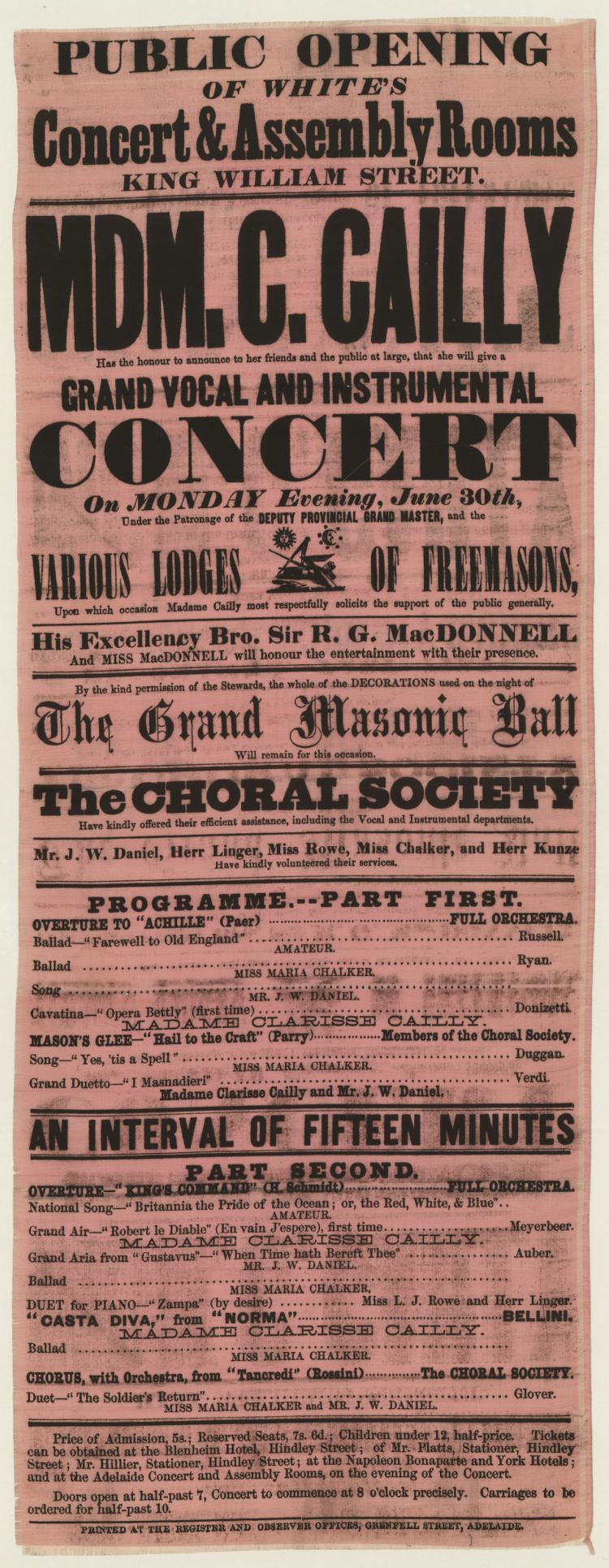
The poster not only listed the concert program, performers, and admission fees but also included specific arrival times, performance start times, and information about ordering carriages–thus adding a touch of sophistication to the event. Printed on silk at the Register and Observer offices in Grenfell Street, Adelaide, this poster survives as a piece of history.
White’s Assembly and Concert Rooms, also known as White’s Rooms, opened in June 1856. The building complex designed by George Kingston, originally housed offices, retail spaces, and a large main hall used for daytime meetings, auctions, and other gatherings. The complex also contained underground halls and was co-located with the Clarence Hotel. White’s Rooms soon became Adelaide’s premier venue for entertainment. The large Assembly Hall hosted concerts, theatrical performances, balls, and public meetings. The main venue featured a stage and large auditorium. From 1859 it was illuminated by gas lighting, a great luxury at the time. White’s first event before opening to the public was the elaborate full-dress Grand Masonic Ball held on 26 June 1856. Decorations from the ball remained on display at White’s first public entertainment, the concert advertised in the silk poster above.
White’s Rooms hosted a wide range of community events including horticultural and flower shows. School prize giving ceremonies, religious meetings, lectures, benefits and receptions also took place there. One of these was a large reception for John McDouall Stuart, on the evening of 21 January 1863, to celebrate his successful crossing of Australia. A regular occurrence was the quarterly soiree of the South Australian Subscription Library and Mechanics Institute whose library was then in Neales Exchange building in King William Street. This library was forerunner to the South Australian Institute which eventually became the State Library of South Australia.
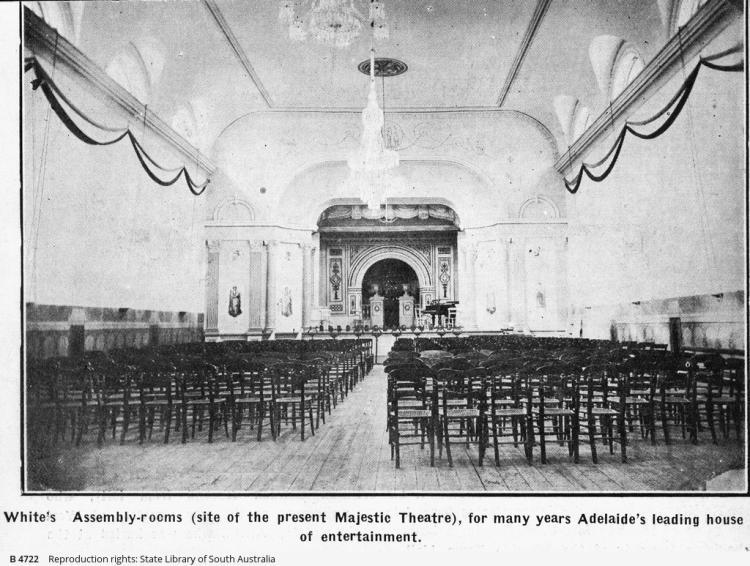
While White’s was not specifically designed as a theatre for stage productions, it was perfect for concerts, variety shows and specialty acts which included bellringers and minstrel shows. Over the years it showcased a wide range of ensemble and solo performers from comic actors to tragedians. The venue would continue to be a hub for variety performances into the early 20th century.
Although there was a proposal to enlarge White’s to seat 1,500 people in 1865, the plan was never realised. After its closure in 1880, the site continued as an entertainment venue, eventually becoming Garner’s Rooms or Theatre. By 1916, it had transformed into the Majestic Theatre (a cinema), and after various changes over the years, the building was demolished in 1981. Despite its transformations, name changes and eventual demise, White's Concert & Assembly Rooms remain a cherished part of Adelaide’s rich cultural history.
Written by Laura Wolfe, Digital Engagement Coordinator